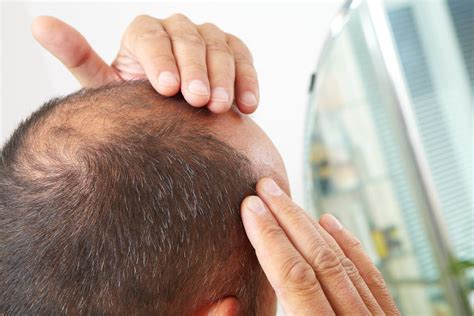Balding, a common concern among individuals, has spurred numerous inquiries into potential remedies. One such inquiry pertains to the efficacy of shaving one’s head in combating hair loss. This article delves into the scientific evidence surrounding this query, exploring whether shaving truly wields the power to prevent or reverse balding.

Understanding Balding
Before delving into the relationship between shaving and balding, it is essential to comprehend the underlying causes of hair loss. Male-pattern baldness, the most prevalent form of balding, is primarily driven by genetics and influenced by factors such as age, hormonal imbalances, and certain medical conditions. The androgenic hormone dihydrotestosterone (DHT), derived from testosterone, plays a crucial role in hair loss by miniaturizing hair follicles over time.
The Myth of Shaving for Hair Growth
While shaving may impart a temporary illusion of fuller hair, it does not possess the ability to promote hair growth or prevent balding. Hair follicles, responsible for hair growth, reside beneath the skin’s surface and are unaffected by shaving. This misconception stems from the fact that shaved hair appears thicker and coarser as it regrows, giving the impression of increased density.
Shaving and Hair Health
Although shaving does not directly influence hair growth, it can potentially affect hair health. Regular shaving removes the hair shaft, which can lead to dryness and irritation if not properly moisturized. Additionally, excessive shaving may weaken hair follicles, rendering them more susceptible to damage and breakage.
Strategies to Combat Balding
If you are experiencing hair loss, several research-backed strategies can help slow down or halt the progression:
Medical Treatments:
- Finasteride: Blocks the conversion of testosterone to DHT, thereby reducing its effect on hair follicles.
- Minoxidil: Stimulates hair growth by promoting blood flow to hair follicles.
- Low-level laser therapy: Uses low-intensity lasers to stimulate hair growth.
Lifestyle Modifications:
- Scalp massage: Improves blood circulation to hair follicles.
- Stress management: Reduces cortisol levels, which can contribute to hair loss.
- Healthy diet: Provides essential nutrients for hair growth.
Alternative Remedies:
- Onion juice: Contains sulfur, which may promote hair growth.
- Castor oil: Rich in ricinoleic acid, which can moisturize hair and scalp.
- Rosemary oil: May stimulate hair follicles and reduce inflammation.
Common Mistakes to Avoid
When addressing hair loss, it is essential to avoid certain common pitfalls:
- Ignoring underlying medical conditions: Hair loss can be a symptom of underlying health issues, which require medical attention.
- Over-shampooing: Excessive shampooing can strip the hair and scalp of natural oils, leading to dryness and breakage.
- Harsh hair treatments: Chemical treatments, such as perming and straightening, can damage hair follicles and exacerbate hair loss.
- Excessive heat styling: Heat styling tools, such as blow dryers and flat irons, can weaken hair and increase breakage.
Step-by-Step Approach to Hair Loss Management
If you are concerned about hair loss, follow these steps:
- Consult a healthcare professional: Determine the underlying cause of hair loss and receive appropriate medical advice.
- Adopt healthy hair care practices: Implement gentle hair washing, minimize heat styling, and use moisturizing products.
- Consider medical treatments: If appropriate, explore FDA-approved medications for hair loss, such as finasteride and minoxidil.
- Integrate lifestyle modifications: Manage stress, improve your diet, and incorporate scalp massage into your routine.
- Be patient and consistent: Hair loss management requires time and consistency. Stick to your treatment plan and be patient with the results.
Conclusion
Shaving one’s hair does not prevent or reverse balding. However, a combination of medical treatments, lifestyle modifications, and alternative remedies can effectively slow down or halt hair loss. By adopting a comprehensive approach that addresses the underlying causes of hair loss, you can maintain a healthy head of hair.
Frequently Asked Questions (FAQs)
1. Why does my hair appear thicker after shaving?
Shaving removes the tapered end of the hair shaft, giving it a thicker, coarser appearance.
2. Can shaving weaken hair follicles?
Excessive shaving may weaken hair follicles, making them more prone to damage and breakage.
3. Is hair loss always permanent?
Some types of hair loss are temporary, such as those caused by stress or hormonal changes. However, male-pattern baldness is typically permanent.
4. Are there any natural remedies for hair loss?
Several natural remedies, such as onion juice, castor oil, and rosemary oil, may promote hair growth or improve scalp health. However, their effectiveness is not scientifically proven.
5. How long does it take to see results from hair loss treatments?
The time frame for results varies depending on the treatment method and individual response. Some treatments, such as finasteride, may take several months to show noticeable improvement.
